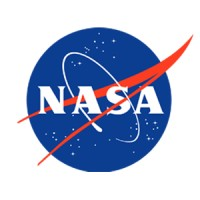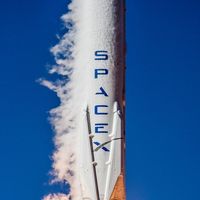NASA's Crew-9 Mission Faces Delays Amid Starliner Concerns
August 7, 2024, 9:32 am

Location: United States, Illinois, Chicago
Employees: 10001+
Founded date: 1916
Total raised: $25.01B

Location: United States, Maryland, Greenbelt
Employees: 10001+
Founded date: 1958
Total raised: $25.7B

Location: United States, District of Columbia, Washington
Employees: 5001-10000
Founded date: 2002
Total raised: $7.53B
NASA is in a tight spot. The agency has decided to delay the Crew-9 mission to the International Space Station (ISS) due to ongoing issues with Boeing's Starliner spacecraft. The mission, originally set for August 18, is now pushed back to September 24, at the earliest. This decision is not just a minor hiccup; it’s a reflection of deeper concerns about the reliability of the Starliner.
The Starliner has been docked at the ISS, but it’s not there for a vacation. It’s a critical piece of technology that has faced significant challenges. A recent helium leak raised alarms, prompting NASA to take a step back. The agency is now weighing its options carefully. The stakes are high. The safety of astronauts is paramount.
Crew-9 will include NASA astronauts Zena Cardman, Nick Hague, and Stephanie Wilson, along with Russian cosmonaut Alexander Gorbunov. They are set to spend six months aboard the ISS. However, NASA is contemplating launching only two astronauts instead of the full crew. This flexibility indicates the agency's cautious approach.
The Starliner’s issues are not new. NASA has acknowledged the risks associated with the spacecraft. The agency's internal discussions reveal a troubling reality: the likelihood of needing to use SpaceX's Crew Dragon for the mission is over 50%. This scenario is not what NASA and Boeing envisioned. They had hoped for a smooth operation, but reality has thrown a wrench in the works.
The problems with Starliner stem from its small thrusters. During a previous launch, five of these thrusters failed. This malfunction raises serious questions about the spacecraft's ability to maneuver safely near the ISS. If the Starliner cannot maintain control, it risks colliding with the station. Such a scenario is a nightmare for mission planners.
NASA had planned to make a decision about Starliner's readiness last week. However, internal disagreements over safety protocols delayed this crucial assessment. The agency is now in a holding pattern, waiting for clarity. Meanwhile, the ISS has two docking ports available. One is occupied by the Crew-8 spacecraft, while the other is currently hosting Starliner.
The Crew-9 mission is a critical part of NASA's strategy to maintain a human presence in space. Delays like this can ripple through the entire program. Each postponement affects training schedules, mission planning, and international partnerships. The ISS is a collaborative effort, and any disruption can strain relationships with international partners.
NASA's reliance on Boeing has been scrutinized. The Starliner was supposed to be a reliable alternative to SpaceX's Crew Dragon. However, the ongoing issues have led to questions about Boeing's capabilities. The aerospace giant has faced challenges before, but this situation is particularly pressing. The clock is ticking, and the pressure is mounting.
In the world of space exploration, timing is everything. Delays can lead to missed opportunities. The Crew-9 mission is not just about sending astronauts to the ISS; it’s about advancing scientific research and international cooperation. Each day spent in limbo is a day lost in the pursuit of knowledge.
NASA's decision to delay the Crew-9 launch is a prudent one. Safety must come first. The agency is taking the time to ensure that all systems are go before sending astronauts into space. This cautious approach is commendable, but it also highlights the challenges of modern space travel.
The Crew-9 mission is a reminder of the complexities involved in space exploration. It’s not just about launching rockets; it’s about ensuring the safety of human lives. NASA is navigating a tricky landscape, balancing innovation with caution. The agency's commitment to safety is unwavering, even if it means delaying missions.
As the space community watches closely, the future of the Starliner remains uncertain. Will Boeing rise to the occasion? Can the company resolve these issues in time? The answers are still unfolding. For now, NASA is focused on ensuring that when the Crew-9 mission finally launches, it does so with the utmost confidence in the spacecraft.
In conclusion, the delay of the Crew-9 mission underscores the challenges of space travel. NASA is making the right call by prioritizing safety. The Starliner’s troubles serve as a stark reminder of the risks involved in pushing the boundaries of exploration. As we look to the stars, we must remember that every mission is a step into the unknown. And in that unknown, safety must always come first.
The Starliner has been docked at the ISS, but it’s not there for a vacation. It’s a critical piece of technology that has faced significant challenges. A recent helium leak raised alarms, prompting NASA to take a step back. The agency is now weighing its options carefully. The stakes are high. The safety of astronauts is paramount.
Crew-9 will include NASA astronauts Zena Cardman, Nick Hague, and Stephanie Wilson, along with Russian cosmonaut Alexander Gorbunov. They are set to spend six months aboard the ISS. However, NASA is contemplating launching only two astronauts instead of the full crew. This flexibility indicates the agency's cautious approach.
The Starliner’s issues are not new. NASA has acknowledged the risks associated with the spacecraft. The agency's internal discussions reveal a troubling reality: the likelihood of needing to use SpaceX's Crew Dragon for the mission is over 50%. This scenario is not what NASA and Boeing envisioned. They had hoped for a smooth operation, but reality has thrown a wrench in the works.
The problems with Starliner stem from its small thrusters. During a previous launch, five of these thrusters failed. This malfunction raises serious questions about the spacecraft's ability to maneuver safely near the ISS. If the Starliner cannot maintain control, it risks colliding with the station. Such a scenario is a nightmare for mission planners.
NASA had planned to make a decision about Starliner's readiness last week. However, internal disagreements over safety protocols delayed this crucial assessment. The agency is now in a holding pattern, waiting for clarity. Meanwhile, the ISS has two docking ports available. One is occupied by the Crew-8 spacecraft, while the other is currently hosting Starliner.
The Crew-9 mission is a critical part of NASA's strategy to maintain a human presence in space. Delays like this can ripple through the entire program. Each postponement affects training schedules, mission planning, and international partnerships. The ISS is a collaborative effort, and any disruption can strain relationships with international partners.
NASA's reliance on Boeing has been scrutinized. The Starliner was supposed to be a reliable alternative to SpaceX's Crew Dragon. However, the ongoing issues have led to questions about Boeing's capabilities. The aerospace giant has faced challenges before, but this situation is particularly pressing. The clock is ticking, and the pressure is mounting.
In the world of space exploration, timing is everything. Delays can lead to missed opportunities. The Crew-9 mission is not just about sending astronauts to the ISS; it’s about advancing scientific research and international cooperation. Each day spent in limbo is a day lost in the pursuit of knowledge.
NASA's decision to delay the Crew-9 launch is a prudent one. Safety must come first. The agency is taking the time to ensure that all systems are go before sending astronauts into space. This cautious approach is commendable, but it also highlights the challenges of modern space travel.
The Crew-9 mission is a reminder of the complexities involved in space exploration. It’s not just about launching rockets; it’s about ensuring the safety of human lives. NASA is navigating a tricky landscape, balancing innovation with caution. The agency's commitment to safety is unwavering, even if it means delaying missions.
As the space community watches closely, the future of the Starliner remains uncertain. Will Boeing rise to the occasion? Can the company resolve these issues in time? The answers are still unfolding. For now, NASA is focused on ensuring that when the Crew-9 mission finally launches, it does so with the utmost confidence in the spacecraft.
In conclusion, the delay of the Crew-9 mission underscores the challenges of space travel. NASA is making the right call by prioritizing safety. The Starliner’s troubles serve as a stark reminder of the risks involved in pushing the boundaries of exploration. As we look to the stars, we must remember that every mission is a step into the unknown. And in that unknown, safety must always come first.